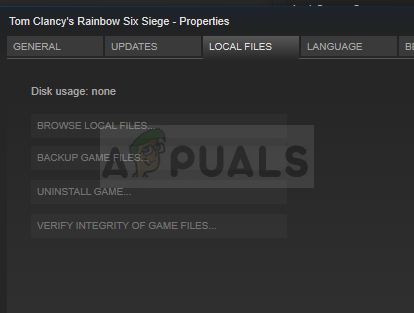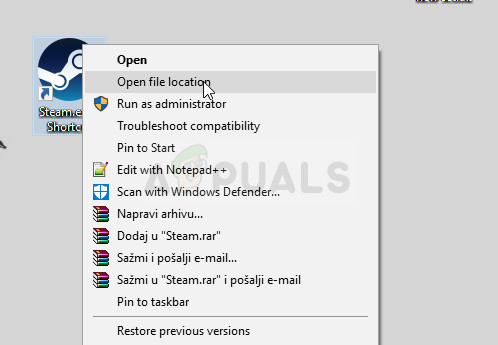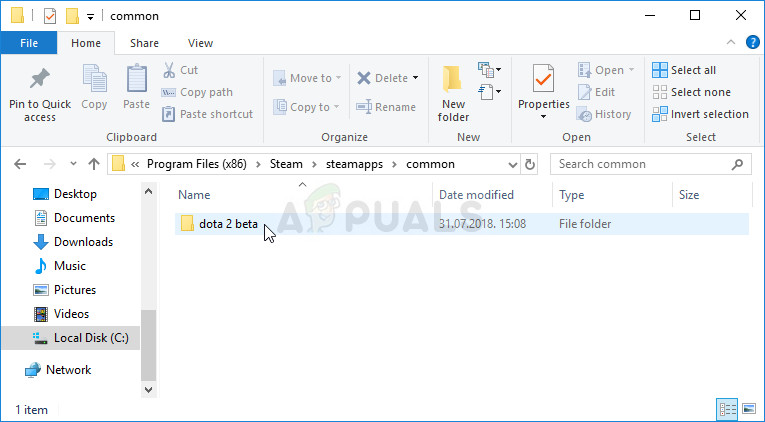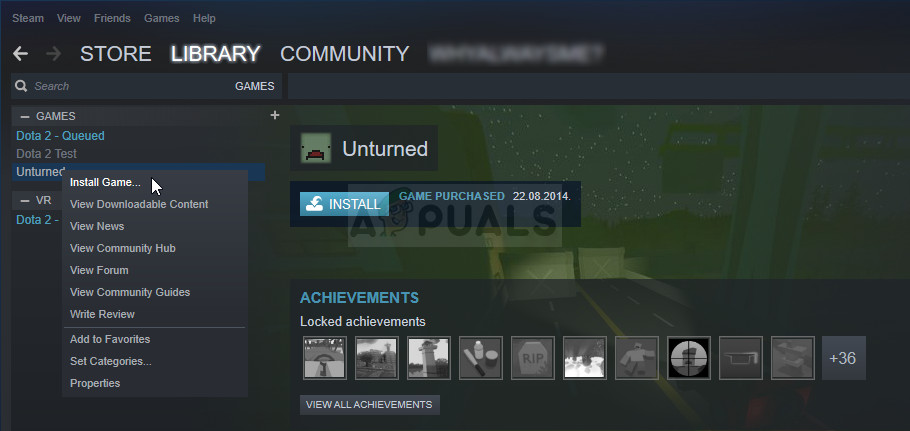Fix: Steam Games Uninstalled Randomly
Steam is a gaming platform targeted almost exclusively at PC users across various operating systems such as Linux, Mac OS X and Windows. It’s probably the easiest way to download, install, and play a full-retail video game and that has made the software so popular. However, it has its flaws.

How to Stop Steam from Uninstalling Games Randomly
Users have began to see that the games they already downloaded and installed require further downloads. Games may appear deleted when Steam is no longer able to recognize the installation files. As long as the game folders are still in the right location, attempting to launch a game will prompt a download. There are several causes for this error so you shouldn’t be sad as you will certainly solve the problem by the end of this article!
Solution 1: Rename the ClientRegistry.blob File
This is file which holds some information regarding your Steam installation and it also includes information regarding your game installations. The good thing that this file gets reset after Steam notices it’s gone which will reset various settings to their default, including the default locations where you games should be located. Try this method out below.
- Navigate to your Steam installation folder. If you haven’t configured any changes during the process of installation regarding the required installation folder, it should be Local Disk >> Program Files or Program Files (x86).
- However, if you have the Steam program’s shortcut on the desktop, you can simply right-click on it and choose the Open file location option from the context menu which will appear.

- Once the folder has opened, locate the ClientRegistry.blob file in there, right-click on it and choose the Rename option from the context menu.
- Rename the file to ClientRegistry.old.blob and confirm the changes. Restart your Steam client and check to see if your games are there where they should be.
Solution 2: Run the Game’s Executable from Steam Folder
The Steam client can be “reminded” of the game being installed on your computer but you will have to locate and run it from within your computer’s Steam library. The process is easy to perform and it has helped plenty of users deal with their problem.
- Open the Steam installation’s root folder the same way you did in the method above, either by locating it manually or by opening the Steam’s shortcut’s file location.
- Furthermore, navigate to steamapps >> common and look for the folder named the same as the problematic game you want to troubleshoot.

- Open it and locate the game’s main executable. The file should be named similar to the game and its icon should be the game’s logo. The extension is .exe but you can always consult Google if you are having second thought.
- Double-click on this icon and wait for the game to open. If you get prompted that the game can only be launched through Steam, launch it through Steam and it should be available in your library.
Solution 3: Broken Appmanifest Files
If you or your antivirus have deleted or altered the “appmanifest” files in the Steam >> steamapps folder on your computer, it’s expected to see the game appearing to be uninstalled. This file actually contains information on where and how the game was installed.
If the file is deleted, there is not much you can do besides checking out the final part of this solution, under Note. However, if the file is still there, you can edit it properly and make sure you point to the right folder.
- Open the Steam’s root folder the same way you did in the method 1 of this article, either by locating it manually or by opening the Steam’s shortcut’s file location.
- Furthermore, navigate to steamapps and look for a file named “appmanifest_(gameID).acf where (gameID) stands for the game ID of the game which appears uninstalled.

- In order to find out the game ID of a Steam game, click on this link, search for your respective game, and check the numbers under the AppID column.

- Right-click on this file, and choose Open with… Notepad in order to edit it. You can also use any other text editor.
- Locate the “installdir” line in the file and check the space to the right. Change the text you see there to the correct name of the folder in the “common” folder where your game is installed.
- Check to see if the game is now recognized after restarting Steam.
Note: Sometimes this process can be unsuccessful because the appmanifest file for your game is nowhere to be found. This can be fixed by restarting the game’s downloading process and stopping it, causing the appmanifest file to be recreated.
- Navigate to the SteamApps folder in Steam’s root folder and open the “downloading” folder. Open the folder called the same as the problematic game’s ID which you should have found out by now.
- Minimize the folder and open Steam’s user interface. Click to navigate to the Library tab, locate your problematic game from the list of games you own at the left side of the screen, right-click on it and choose Install.

- As soon as any file appears in the folder which you have minimized, select all of them with your mouse, right-click, and choose the Delete option from the context menu. This will cause the download to stop immediately and Steam will now scan to see which files are missing.
- This way, it will only redownload the missing files and that would be next to nothing and your game should now be downloaded and playable.





